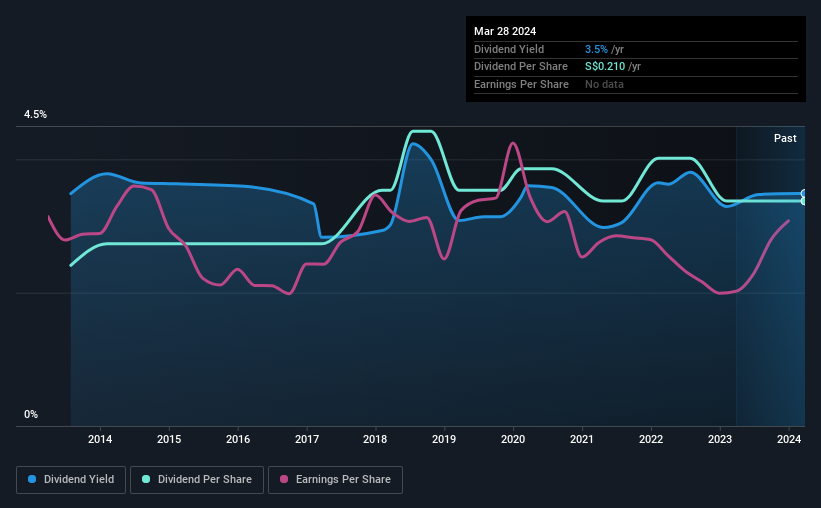United Overseas Insurance's (SGX:U13) Dividend Will Be SGD0.125
United Overseas Insurance Limited (SGX:U13) will pay a dividend of SGD0.125 on the 15th of May. This payment means that the dividend yield will be 3.5%, which is around the industry average.
See our latest analysis for United Overseas Insurance
United Overseas Insurance's Payment Has Solid Earnings Coverage
While it is always good to see a solid dividend yield, we should also consider whether the payment is feasible. However, prior to this announcement, United Overseas Insurance's dividend was comfortably covered by both cash flow and earnings. As a result, a large proportion of what it earned was being reinvested back into the business.
Looking forward, earnings per share could rise by 4.2% over the next year if the trend from the last few years continues. If the dividend continues on this path, the payout ratio could be 43% by next year, which we think can be pretty sustainable going forward.
Dividend Volatility
The company has a long dividend track record, but it doesn't look great with cuts in the past. Since 2014, the dividend has gone from SGD0.15 total annually to SGD0.21. This implies that the company grew its distributions at a yearly rate of about 3.4% over that duration. It's encouraging to see some dividend growth, but the dividend has been cut at least once, and the size of the cut would eliminate most of the growth anyway, which makes this less attractive as an income investment.
United Overseas Insurance May Find It Hard To Grow The Dividend
Growing earnings per share could be a mitigating factor when considering the past fluctuations in the dividend. Earnings has been rising at 4.2% per annum over the last five years, which admittedly is a bit slow. If United Overseas Insurance is struggling to find viable investments, it always has the option to increase its payout ratio to pay more to shareholders.
In Summary
In summary, we are pleased with the dividend remaining consistent, and we think there is a good chance of this continuing in the future. While the payout ratios are a good sign, we are less enthusiastic about the company's dividend record. Taking all of this into consideration, the dividend looks viable moving forward, but investors should be mindful that the company has pushed the boundaries of sustainability in the past and may do so again.
Companies possessing a stable dividend policy will likely enjoy greater investor interest than those suffering from a more inconsistent approach. Meanwhile, despite the importance of dividend payments, they are not the only factors our readers should know when assessing a company. For example, we've identified 2 warning signs for United Overseas Insurance (1 shouldn't be ignored!) that you should be aware of before investing. Looking for more high-yielding dividend ideas? Try our collection of strong dividend payers.
Have feedback on this article? Concerned about the content? Get in touch with us directly. Alternatively, email editorial-team (at) simplywallst.com.
This article by Simply Wall St is general in nature. We provide commentary based on historical data and analyst forecasts only using an unbiased methodology and our articles are not intended to be financial advice. It does not constitute a recommendation to buy or sell any stock, and does not take account of your objectives, or your financial situation. We aim to bring you long-term focused analysis driven by fundamental data. Note that our analysis may not factor in the latest price-sensitive company announcements or qualitative material. Simply Wall St has no position in any stocks mentioned.

